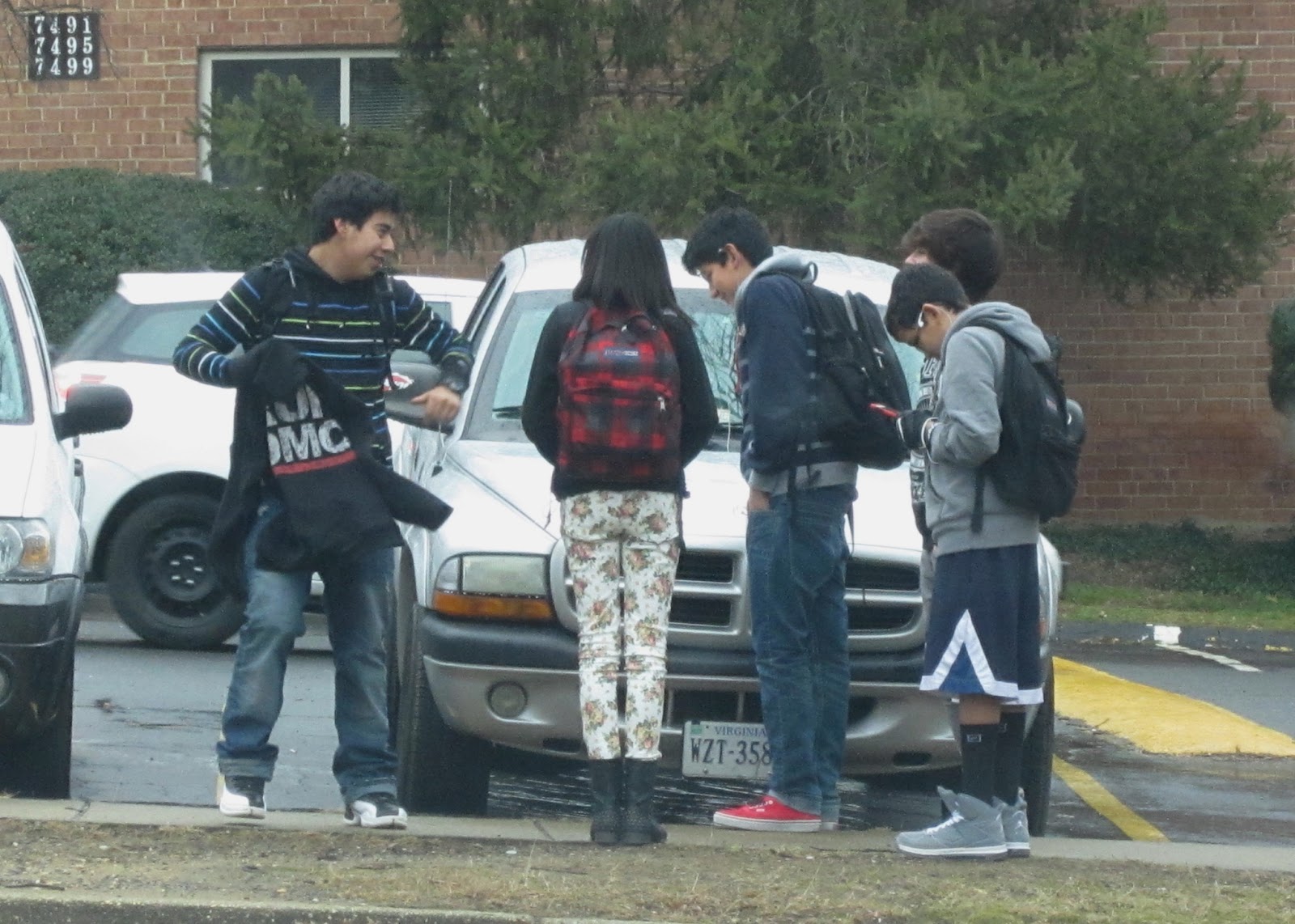Annandale youth engagement initiative in the works
 |
| Annandale youths on Medford Drive on a recent afternoon. |
Annandale stakeholders have come together to develop recommendations for a youth engagement initiative. The Annandale Community Planning Group (CPG), an outgrowth of the Annandale dialogues on diversity, is facilitated by the Fairfax County Department of Neighborhood and Community Services (NCS).
At the group’s second meeting, Feb. 21, Steve Lee of American Home Funding, a mortgage company based in Annandale, was appointed co-chair. Lee said he would like to the committee help organize some kind of event, like a “Taste of Annandale” or other type of festival representing the diverse cultures of Annandale.
Among the group’s members are the captains of the Mason, West Springfield, and Franconia police districts; leaders from the faith community; representatives of the Ravensworth-Bristow neighborhood; the Inova Fairfax Hospital outreach director; and other community and business leaders.
Several more youths were added to the CPG, including three Annandale High School (AHS) students and a graduate of AHS now attending George Mason University. “Everyone here is equal,” said Norma Lopez of the NCS. “The youth members have equal say.” A youth co-chair will be selected before the next meeting.
Mason Supervisor Penny Gross told the group efforts are needed to help youths—and adults, too—develop better “coping skills and resilience.” That’s become evident as the nation has been facing natural and man-made disasters and fears that people feel they have no control over, she said. According to Gross, people make better decisions about the community when they are better informed and engaged. “We need to make sure youths are heard, as well as new Americans and senior citizens,” she said. “We have a vibrant and diverse community. We can make it better.”
The CPG’s mission is to look at the data on the youth of Annandale, research various youth engagement models, set goals and priorities, develop core principles, and come up with recommendations.
Elisa Lueck, Region 2 manager at the NCS, presented some troubling data on Annandale teenagers. The 2010-11 school safety report card for Annandale High School showed an increase over the previous year in alcohol, tobacco, and other drug offenses and an increase in disorderly or disruptive behavior offenses. On the plus side, there were declines in offenses against another person, property offenses, and weapons offenses.
Lueck also described the findings of the Fairfax County Youth Survey for 2011-12 for the Annandale High School pyramid, which includes students at AHS and the elementary and middle schools that feed into it.
When it comes to “risk behaviors and experiences,” the youth survey found sixth-graders in the Annandale pyramid were more likely to be depressed and to have cyber-bullied someone in the past year, compared to FCPS students in other pyramids. Annandale pyramid sixth-graders were less likely to have carried a weapon.
Eighth, 10th, and 12th-graders in the Annandale pyramid were more likely to have depressive symptoms than students in other pyramids. Eighth-graders were more likely to have used alcohol in the previous 30 days. Tenth and 12th-graders were more likely to have had sexual intercourse, and 12th-graders were more likely to have used marijuana in the past 30 days. Both 10th and 12th graders in the Annandale pyramid were less likely than other FCPS students to have bullied someone in the past year.
In looking at assets, sixth, eighth, 10th, and 12-graders in the Annandale pyramid were less likely to have adults in the community to talk to and less likely to participate regularly in extracurricular activities than students in other pyramids. Annandale eighth, 10th, and 12th-graders were less like to have parents available to help, and 10th and 12th-graders were less likely to perform community service regularly. On the plus side, eighth, 10th, and 12th-graders were more likely to feel that teachers recognize good work.
Lopez advised the CPG members to look at the data on youth from the perspective of assets—focusing on what they have, rather than their problems. “Youth are not people that need fixing,” she said.
She also urged the group to come up with a youth initiative that they will be able to carry out. “Whatever we decide, we’re not leaving it for the county to implement,” Lopez said. “Nothing gets put on paper unless we’re going to do it—even if it’s a great idea.”

